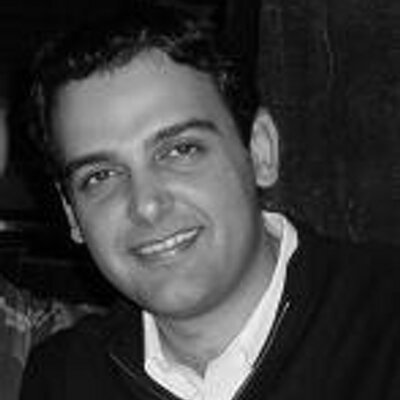By Karmel Melamed
May 2007
While news about Iran often dominates current political headlines, one does not often learn much about its ex-patriot community â particularly its Jewish one. Yet almost 30 years after Iranâs Islamic revolution, the near 30,000 descendents of Queen Esther who resettled in Southern California have become one of the most affluent and productive Jewish communities in the United States.
âYou have to look at our situation from so many angles. We are the survivors of a revolution,â said Dariush Fakheri, co-founder of the Eretz-SIAMAK Cultural Center, a Jewish cultural center formed in 1979. âOur main goal was to survive, so we did whatever we had to do to reach that goal.â
While many Iranian Jews have been successful professionally, Eretz-SIAMAK has taken up the task of providing support to Iranian Jews in Los Angeles who are just barely getting by. With their primary goal to feed hungry, low-income Jews, Eretz-SIAMAK subsidizes food expenses for needy families by giving them $50- to $100-worth of coupons per month, depending on their income, and provides help from other organizations and assistance for people in their households, said Manizeh Yomtoubian, co-founder of Eretz-SIAMAK.
In addition, the Jewish Vocational Service (JVS), Jewish Family Service and other agencies affiliated with The Jewish Federation of Greater Los Angeles have helped create a support system for new Iranian Jewish immigrants. JVS has helped about 250 immigrants locate suitable work over the last five years, said Elham Yaghoubian, one of the agencyâs four Persian language-speaking counselors.
âWe refer them to appropriate English as a second language classes and vocational training,â Yaghoubian said. âWe also train our clients in job-search techniques and provide job referrals.â
Also with new immigrants in mind, the L.A.-based Torat Hayim Center, Eretz-SIAMAK and the Hope Foundation formed the Caring Committee, which helps provide newly arrived Iranian Jews with funds for rent, groceries, medical and legal bills, transportation and school tuition.
âWe help them because no one else does, and we offer them what they cannot receive from welfare; or some donât have any documents in this country but are hungry,â said Manijeh Youabian, an 18-year Eretz-SIAMAK volunteer.
Philanthropic causes are central to many Iranian Jews. During Israelâs war with Hezbollah last summer, Iranian Jews living in Southern California and New York pledged a total of almost $6 million for Israeli organizations aiding the victims of Hezbollah rocket attacks. The giving has special meaning for Iranian-American Jews who not long ago enjoyed the umbrella of protection Israel offered them while living in Iran. Now, many feel a sense of duty to support Israel at a time when it is being threatened by Iran.
âWe are the children of parents who were born and raised in Iranâs ghettos during the Holocaust and the subsequent birth of the state of Israel,â said Sam Kermanian, Secretary General of the Iranian American Jewish Federation (IAJF), based in L.A. âI think we have a keen understanding of the fact that when the chips fall, the only guarantee against another Holocaust is a strong state of Israel.â
In 2000, various Iranian-Jewish organizations in Los Angeles brought to the worldâs attention the plight of 13 Iranian Jews who were arrested by Iranâs fundamentalist Islamic regime on false charges of treason and were in danger of being executed. Immense publicity resulted in the Jews being sentenced to short prison terms and later released.
Despite these collective efforts, the community is often divided on matters of religiosity, leadership roles, economic and social status, and political activism concerning Iran. As a result, the community in Southern California hosts, in addition to large synagogues, more than two-dozen storefront synagogues and small religious schools.
Community leaders have made a new effort to set aside differences of opinion to attract younger Iranian Jews who have begun to intermarry, who join American synagogues, or who abandon their Jewish roots. In particular, the Nessah Cultural Center in Beverly Hills has encouraged greater participation of women in its religious services, which used to be more male-oriented.
âI have always felt that Nessah could be an incredible bridge for more women to participate in our community, for younger American Jews of Iranian descent to connect with their heritage and for American Jews to become more familiar with us,â said Dr. Morgan Hakimi, Nessah president.
In Persian Orthodox culture, where men traditionally dominate leadership positions, Hakimiâs post is unique because she is the only female president of an Iranian-Jewish synagogue. Hakimi was first elected in 2004, despite great skepticism. Yet as her initiatives led to a substantial increase in membership, she was re-elected in 2006.
Now, more young Persian and non-Persian Jews participate in programming Hakimi has developed. During Shabbat services, crowds pack Nessahâs two sanctuaries, particularly women. Eight women now sit on the centerâs board of directors, and more women serve in committee and staff positions. Nessah is also one of the few Iranian Jewish organizations that gives its youth committee a full budget and the ability to make decisions on their social activities.
Despite the high rate of assimilation of Iranian Jews, many say they will continue to pass on their cultural traditions to the U.S.-born generation.
âI feel the pain of a Jewish mother who was born and raised in Iran and has difficulty raising her children in the U.S., where there are different values,â said Hakimi. âI hope that as a community we can bridge the gap between American Jews of Iranian heritage and their rich traditions.â
This article was originally published by PreTense Magazine:























 More news and opinions than at a Shabbat dinner, right in your inbox.
More news and opinions than at a Shabbat dinner, right in your inbox.